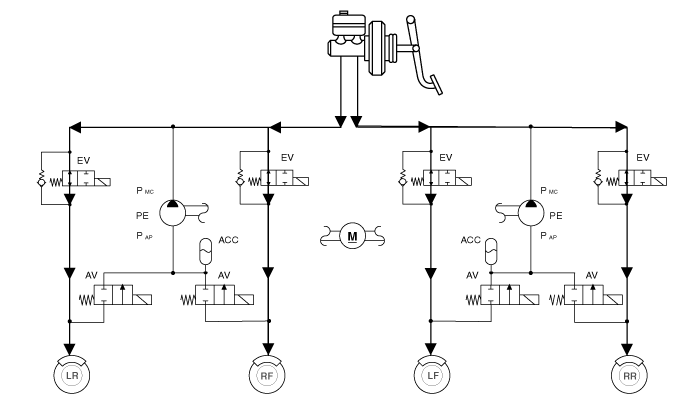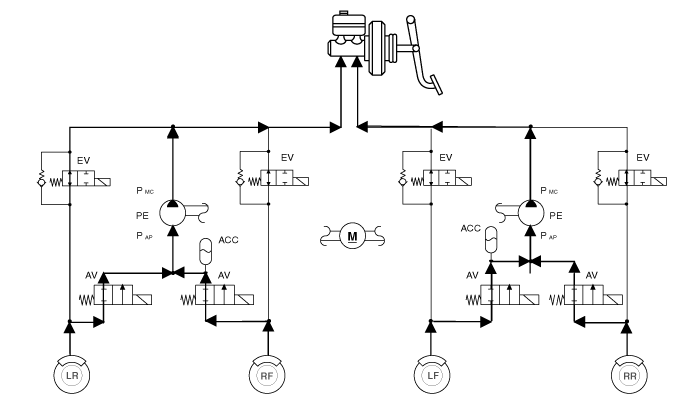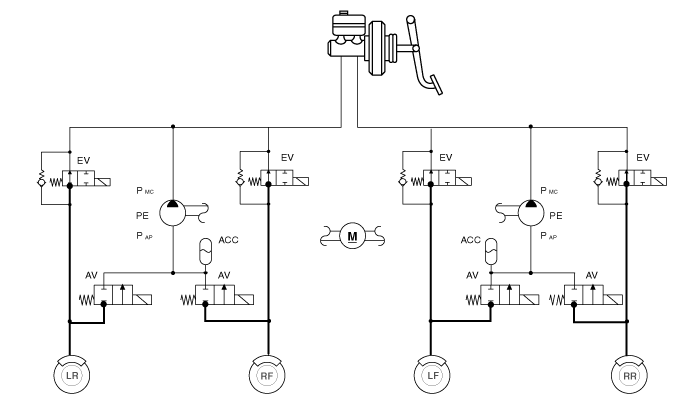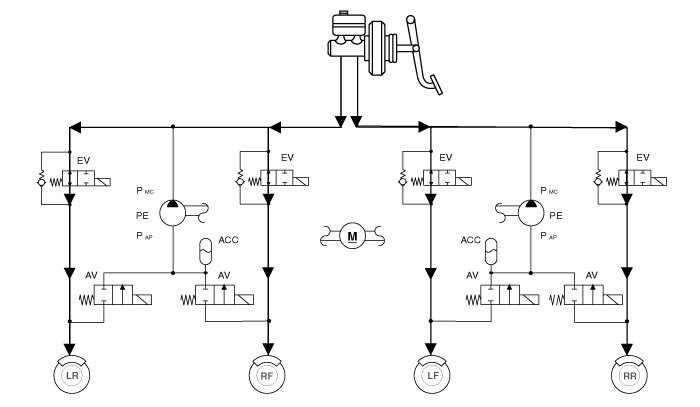 Hyundai Elantra: Description and Operation
Hyundai Elantra: Description and Operation
Description
This specification applies to HCU(Hydraulic Control Unit) and ECU(Electronic
Control Unit) of the HECU.(Hydraulic and Electronic Control Unit)
This specification is for the wiring design and installation of ABS/TCS/ESC
ECU.
This unit has the functions as follows.
| - |
Input of signal from Pressure sensor, Steering angle sensor, Yaw
& Lateral G sensor, the wheel speed sensors attached to each wheel.
|
| - |
Control of braking force / traction force/ yaw moment.
|
| - |
Failsafe function.
|
| - |
Self diagnosis function.
|
| - |
Interface with the external diagnosis tester.
|
Installation position : engine compartment
| - |
Brake tube length from Master cylinder port to HECU inlet port
should be max. 1m
|
| - |
The position should not be close to the engine block and not lower
than the wheel.
|
Operation
The ECU shall be put into operation by switching on the operating voltage
(IGN).
On completion of the initialization phase, the ECU shall be ready for
operation.
In the operating condition, the ECU shall be ready, within the specified
limits (voltage and temperature), to process the signals offered by the various
sensors and switches in accordance with the control algorithm defined by the
software and to control the hydraulic and electrical actuators.
Wheel Sensor Signal Processing
The ECU shall receive wheel speed signal from the four active wheel sensors.
The wheel signals are converted to voltage signal by the signal conditioning
circuit after receiving current signal from active wheel sensors and given as
input to the MCU.
Solenoid Valve Control
When one side of the valve coil is connected to the positive voltage that
is provided through the valve relay and the other side is connected to the ground
by the semiconductor circuit, the solenoid valve goes into operation.
The electrical function of the coils are always monitored by the valve
test pulse under normal operation conditions.
Voltage Limits
| - |
Overvoltage
When overvoltage is detected(above 16.8 V), the ECU switches off
the valve relay and shuts down the system.
When voltage is returned to operating range, the system goes back
to the normal condition after the initialization phase.
|
| - |
Undervoltage
In the event of undervoltage(below 9.3 V), ABS control shall be
inhibited and the warning lamp shall be turned on.
When voltage is returned to operating range, the warning lamp
is switched off and ECU returns to normal operating mode.
|
Pump Motor Checking
The ECU performs a pump motor test at a speed of 30km/h(18.6mph) once
after IGN is switched on.
Diagnostic Interface
Failures detected by the ECU are encoded on the ECU, stored in a EEPROM
and read out by diagnostic equipment when the ignition switch is turned on.
The diagnosis interface can also be used for testing the ECU during production
of the ECU and for actuating the HCU (Air-bleeding line or Roll and Brake Test
line).
Warning Lamp module
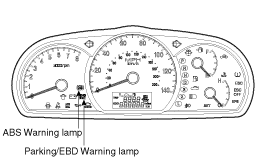
| 1. |
ABS Warning Lamp Module
The active ABS warning lamp module indicates the selftest and
failure status of the ABS.The ABS warning lamp shall be on:
|
| 2. |
Parking/EBD Warning Lamp Module
The active EBD warning lamp module indicates the selftest and
failure status of the EBD.However, in case the Parking Brake Switch
is turned on, the EBD warning lamp is always turned on regardless of
EBD functions.The EBD warning lamp shall be on:
|
ABS Control
| 1. |
Normal Braking without ABS
|
| 2. |
Decrease Mode
|
| 3. |
Hold Mode
|
| 4. |
Increase Mode
|

